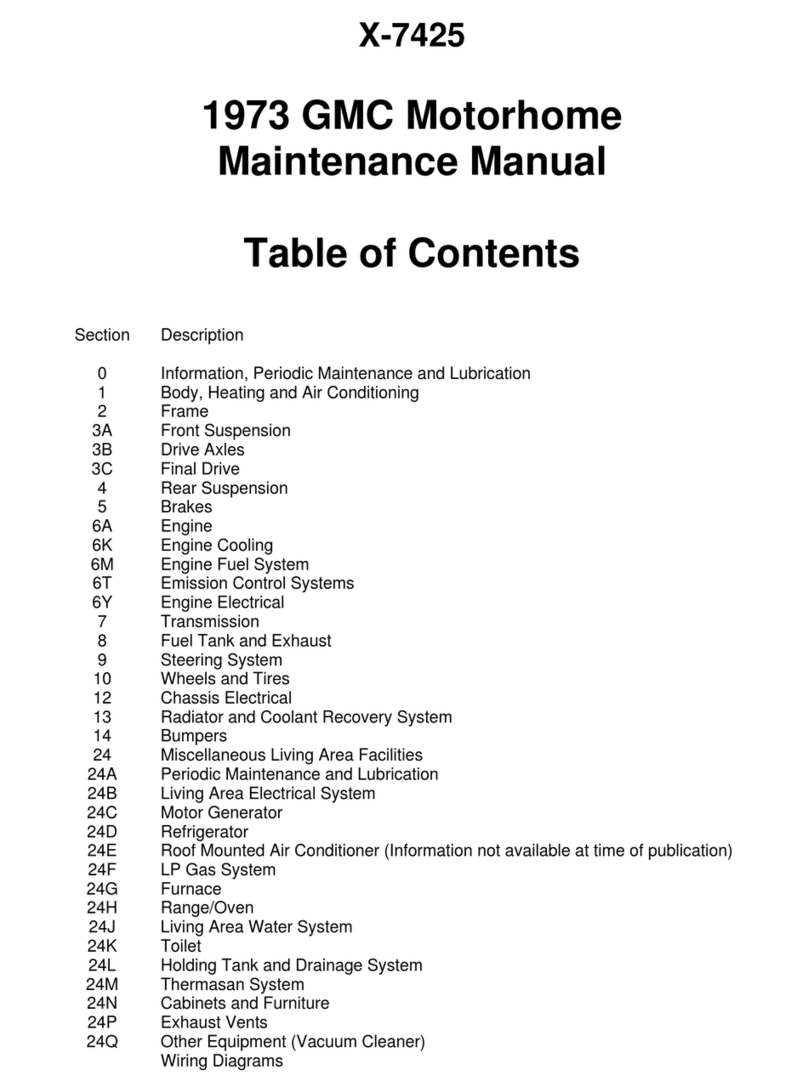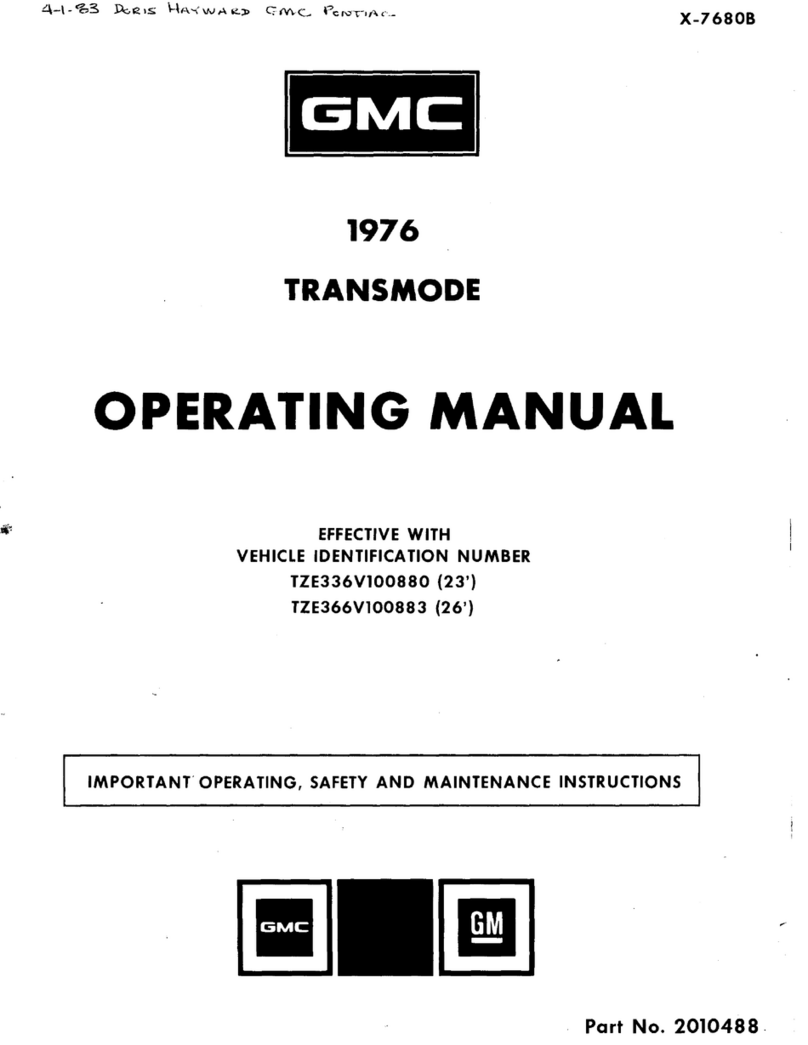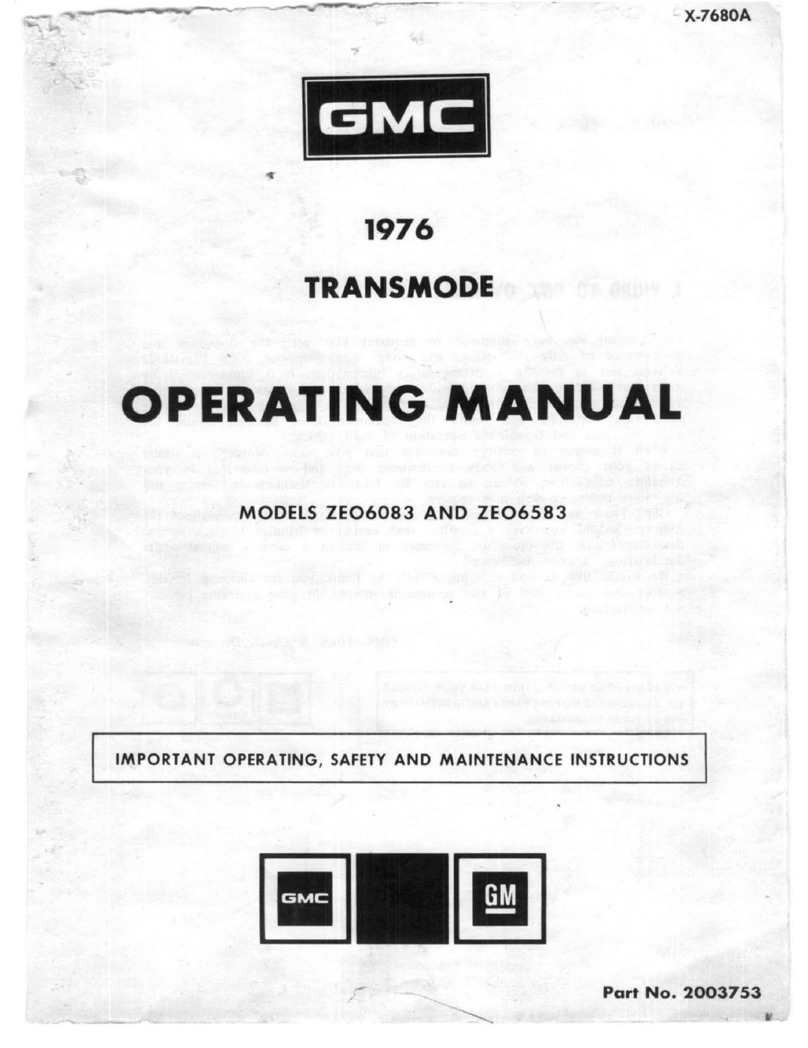)
H. Braking System
The service braking system is designed to
operate effectively under all load conditions and
at all speeds. The system
is
so built that
in
the
event of ahydraulic fluid leak
in
one half of the
system, the other half still provides braking
action.
Brake adjustment is automatic on your new
REVCON. The self-adjusting rear brakes
eliminate any periodic brake adjustments, and
the disc brakes on the front wheels require no
adjustment.
The rear drum-type brakes are automatically
adjusted every time the brakes are applied while
the vehicle is moving in reverse. It is possible,
however, for excessive brake pedal travel to
develop if the required reverse motion and
brake application does not occur over along
period of time. If excessive brake pedal travel
does develop, the vehicle should be driven
backward and the brakes applied firmly. This
procedure, repeated several times, should
restore normal brake travel. If not, immediate
inspection should be made by yourAuthorized
Dealer.
CAUTION: "Riding the Brake," resting your
foot
on
the brake pedal when not intending to
brake, can cause excessive lining wear and
damage to the brake system.
POWER BRAKES
Your REVCON is equipped with Oldsmobile
vacuum power brakes to reduce braking effort.
If the engine should stall, the vehicle can still be
stopped, but greater force must be applied to
the brake pedal.
CAUTION: Driving through deep water may
affect brake performance. Alight application of
"the brakes will indicate if they have been
affected. To drythem quickly, lightly applythe
brakes with your left foot while maintaining a
constant pressure
on
the accelerator with your
right foot. This is the only instance when
"riding
the brakes" is permissible. Maintain acautious
speed and be certain that the road is clear, both
in
front of and behind your vehicle, when making
this m,aneuver.
I.
Engine Fuel
The fuel filler
tUb~
is located within the lock
compartment on the right side of the vehicle,
next to the fresh water filler. The area within the
fuel filler compartment is red.
CAUTIO'N: Gasoline
is
flammable and
explosive under certain conditions. ALWAYS
STOP THE ENGINE AND DO NOT SMOKE
OR
ALLOW OPEN FLAMES OR SPARKS NEAR
THE VEHICLE WHEN REFUELING. If gasoline
fumes are noticed while driving, the cause
should be determined and corrected without
delay.
Your REVCON is designed to operate
on
regular gasolines. However, any gasoline with
91
Research Octane number or higher will
satisfy your engine's octane requirements. Use
of unleaded
or
low-lead gasoline will keep your
engine running efficiently and play
an
important
part
in
reducing exhaust emissions of hydro-
carbons and particulates. If unleaded
or
low-lead gasolines are not available, you may
use aleaded regular-grade gasoline. Since the
anti-knock quality of all gasolines is not the
same and factors such
as
altitude, terrain and
air temperature affect operating efficiency,
knocking may result even though you are using
the recommended fuel. If persistent knocking is
encountered, consult your Authorized Dealer.
Continuous or excessive knocking may result
in
engine damage, and constitutes amisuse of the
engine for which REVCON cannot be responsible
underthe terms of the New Vehicle Warranty.
NOTE:
Premium fuel is required
in
all 240 models.
In
certain foreign countries, there is apossibility
that even the best fuels are so low in anti-knock
additives that excessive knocking and serious
engine damage may result from their use.
Consult
an
Authorized Dealer if you plan to
travel outside the continental United States.







































